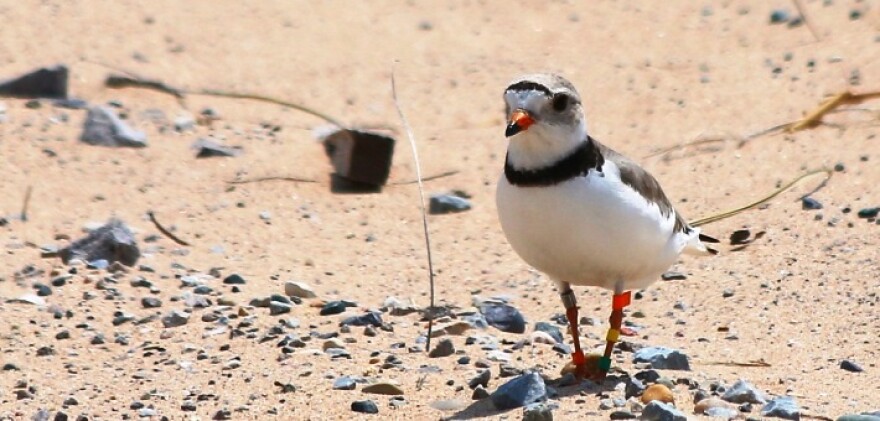In the late 1980s, the Great Lakes Piping Plover was nearly extinct. There were only 10 known pairs. Slowly, the endangered species has made a comeback. There are 67 pairs today. One those couples calls Muskegon State Park home.
The Plover, a lot of gray, black and white coloration on its wings and it's back. A small little bird, but a very important for to our ecosystem here on the Great Lakes. This area here is kind of an experiment. We're going to encourage them hopefully to make their nest over in this area. My name is Matt Schwemin, I'm the lead worker. I've been working at Muskegon State Park for about 50 years. Michigan DNR Parks and Rec Division.”
Matt brings me to the park’s main, day-use beach area – known to locals as the beach house.
“Also where the Great Lakes piping plover likes to make its home.”
This is where a dump truck of pea gravel is rolled in. With buckets in hand, a dozen DTE Energy volunteers spread it over the sand.
“It doesn't look like for doing a whole lot. But what if he grabbed will or what. What is known as cobble. It is very similar to what their wing and body coloration. It's their main defense mechanism when a predator, they feel threatened, they actually hunker down and because the bird is already kind of small in the first place. They almost disappear.”
The pair of Plovers will nest in May and lay eggs. The female will migrate south by mid-July. The male will raise the chicks and follow his mate in late August.

